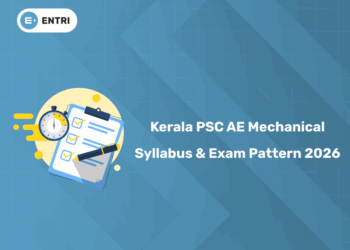Table of Contents
Building and infrastructure design, construction, and operation are greatly influenced by MEP (Mechanical, Electrical, and Plumbing) engineering. Making sure the MEP systems are implemented accurately and in accordance with the design standards presents another difficulty during the construction. To make sure that the systems are operating as calculated, MEP designers have to supervise the installation procedure, visit the site, and carry out the quality checks. Any changes made to the design should be immediately addressed to prevent the delays and the future problems. This article will aims to discuss the common challenges experience by the MEP designers and offer the workable solutions.
Elevate your career with our comprehensive MEP Course! Get Free Demo Here!
Introduction
During the project design process, the MEP designers experience a variety of difficulties. Finding a balance between implementing the sustainable and the energy-efficient measures and attach to the construction norms and regulations is one of the biggest problems. The regional differences exist in building the rules and regulations, and it can be difficult to stay current with them.
The building’s architectural style and the spatial limitations must also be taken into account by the MEP designers. Without sacrificing the use or style, they must come up with the creative ways to incorporate all the required systems into the limited area. To guarantee the smooth integration of the MEP systems into the overall building design, this frequently need close collaboration with the architects and the other stakeholders.
Furthermore, the MEP designers must keep up with the most recent developments in their profession due to the continuous growth of technology. This requir implementing the sustainable practices, streamlining the energy management systems, and incorporating with the smart building technologies. It might be difficult to keep up with these technological breakthroughs, but doing so is essential to making sure that the buildings are fit for the future and can accommodate the residents with ever growing needs.
Common Challenges and Solutions by Working with the MEP Designers
For the MEP designers, the construction process brings out an unique obstacles. Two main issues that engineers frequently face are managing the design modifications on the fly and coordinating with the other trades. The modifications to the MEP systems may be necessary as construction moves forward due to the unexpected site circumstances or the changes in the architectural concept.
The MEP designers need to be able to respond quickly to these developments and offer workable and affordable solutions. Also the effective communication and cooperation with other trades, like the contractors, structural engineers, and the architects, are necessary for this. It takes the regular meetings and coordination sessions to make sure that everyone is in agreement and that any changes to the design are executed without any holding.
1. Design and Coordination Issues
Coordinating the many systems involved in a project is one of the main issues in the MEP engineering. Because the mechanical, electrical, and plumbing systems are frequently located near to one another, smooth integration is necessary to prevent the errors and inefficiencies. Inadequate coordination may result in the expensive rework and the construction delays.
Solution:
Use the Building Information Modeling (BIM) technologies to improve the cross-disciplinary coordination and collaboration. The 3D visualization and the data exchange are made possible by the BIM, which also facilitates the early clash identification and streamlines the stakeholder communication.
2.Energy Inefficiency Demands
MEP engineers are under increasing the pressure to design systems that will minimize energy use without sacrificing the performance, as sustainability and the energy efficiency become more and more important. It can be quite difficult to observe with the strict energy laws and standards, especially in older buildings with the outdated equipment.
Solution:
Utilize the energy modeling and simulation technologies in the design stage to assess and maximize the energy efficiency of the building. Think about the utilizing energy-saving tools and systems, such as the variable-speed drives, LED lights, and the highly efficient HVAC systems.
3. Rapidly Advancing Technology
The MEP engineering is a constantly changing the sector where the new technologies are developed on a regular basis. It might be difficult to stay on top of new developments and then understand their real-world. implications.
Solution:
Promote the lifelong learning and career advancement among the staff. Keep up with the industry journals, go to the conferences, and spend money on training courses to make sure your staff is prepared to use the newest technologies efficiently.
Elevate your career with our comprehensive MEP Course! Get Free Demo Here!
4. Cost Overruns and Budget Overflows
The budget constraints are a typical issue in the MEP projects. It might be challenging to affect the balance between the need for cutting-edge technology and the energy-efficient systems and the available funds.
Solution:
Sort projects according to the importance and then return on investment over the long run. Think about the life-cycle cost analysis, which takes into the consideration the system’s lifetime operating and the maintenance costs in addition to its initial price. Achieve the cost-effectiveness and performance balance by optimizing the design.
5. Water Management Issues
Inefficient water systems can lead to an excessive water consumption, high utility bills, and the potential structural damage due to leaks or flooding.
Solution:
MEP designers play an important role in developing an efficient plumbing and the water management systems. They ensure the proper design and the installation of water supply, drainage, and waste systems to minimize the water wastage and maximize the efficiency.
By working with the MEP designers, you can ensure that your building’s water systems are optimized for the efficiency and sustainability. This will be leading to the lower utility bills, reduced environmental impact, and a more strong building structure.
6. Inadequate Ventilation and Indoor Air Quality
Poor ventilation can lead to inadequate indoor air quality, which will negatively impacts the health, comfort, and productivity of the occupants. The issues such as excess humidity, the accumulation of pollutants, and insufficient fresh air circulation can cause various health problems and discomfort.
Solution:
The MEP designers ensure the proper ventilation and the indoor air quality by designing and implementing effective HVAC (Heating, Ventilation, and Air Conditioning) systems.
By collaborating with the MEP designers, you can ensure that your building’s HVAC systems are designed to provide an optimal ventilation and air quality. This not only promotes the health and well-being of occupants but also they enhances the comfort and productivity, making the building a more pleasant and an efficient space to inhabit.
7. Building the Code Compliance
For the project to be safe and adaptable, observance to the building standards and the regulations is very important. It might be difficult to understand and keep up with the codes that are constantly changing, though.
Solution:
Hire the MEP consultants with experience who understand the building laws and regulations in your area. To stay up to date on updates and any modifications, engage in the regular consultations with the code authorities and take part in code development committees.
Discover the NSDC-certified MEP Design course offered by Entri Elevate! Receive placement help, a thorough curriculum, and training focused on your career. MEP courses, which stand for mechanical, electrical, and plumbing courses, are crucial to the design and construction of buildings. It includes organizing, designing, and integrating the plumbing, electrical, and mechanical systems into a structure or infrastructure.
Ensuring the sustainability, safety, and functionality of a building requires completion of the MEP Certification Course. This will make it easier for the applicants to apply their expertise to real-world tasks. Entri provides the greatest placement assistance possible to assist students in relocating to secure, rewarding settings.
Elevate your career with our comprehensive MEP Course! Get Free Demo Here!
Conclusion
MEP engineering has its share of difficulties, but they may be resolved with careful preparation, creative thinking, and a dedication to ongoing improvement. In the ever changing field of MEP engineering, innovation, teamwork, and knowledge of market trends are essential for being competitive. MEP engineers can provide effective, long-lasting, and future-proof solutions that have a beneficial influence on the built environment and the communities they serve by taking on these difficulties head-on.
You may avoid many different types of problems by working with expert MEP designers, such as energy inefficiencies, compliance concerns, and design and coordination issues. Their knowledge guarantees that every building system is effectively integrated, efficient, and complies with all applicable laws, making the building safer, more comfortable, and more economical.
Master MEP Design with Industry-Leading Training!
Gain in-depth knowledge of Mechanical, Electrical, and Plumbing (MEP) Design with expert-led courses. Learn HVAC, fire safety, sustainable building strategies, and BIM applications to excel in the construction industry.
Know MoreFrequently Asked Questions
What obstacles or difficulties did you encounter whilst studying MEP?
The integration of several MEP systems to ensure their smooth operation is one of the main problems. Because fire safety, plumbing, HVAC, and electrical systems are all interrelated, engineers must design them such that there are no conflicts or performance problems and that there is optimal functionality.
What role does MEP play in the construction of buildings?
Mechanical, electrical, and plumbing” (MEP) refers to the engineering of those systems in building. MEP systems, which are frequently out of sight, keep building interiors safe and livable. They power elevators and numerous other machines, control humidity and temperature, and remove trash and precipitation.
How does the MEP design process work?
The process of producing a 3D detailed model that includes every component of a project’s mechanical, electrical, and plumbing system—both technically and functionally—is known as MEP design. The following three processes can be handled by MEP design in a single 3D model on a BIM platform.
Does MEP have a bright future?
Due to the rising demand for green buildings and the expansion of the construction sector, MEP engineers are in high demand. The job market for mechanical, electrical, and plumbing (MEP) engineers is expected to be strong and promising in 2024.











